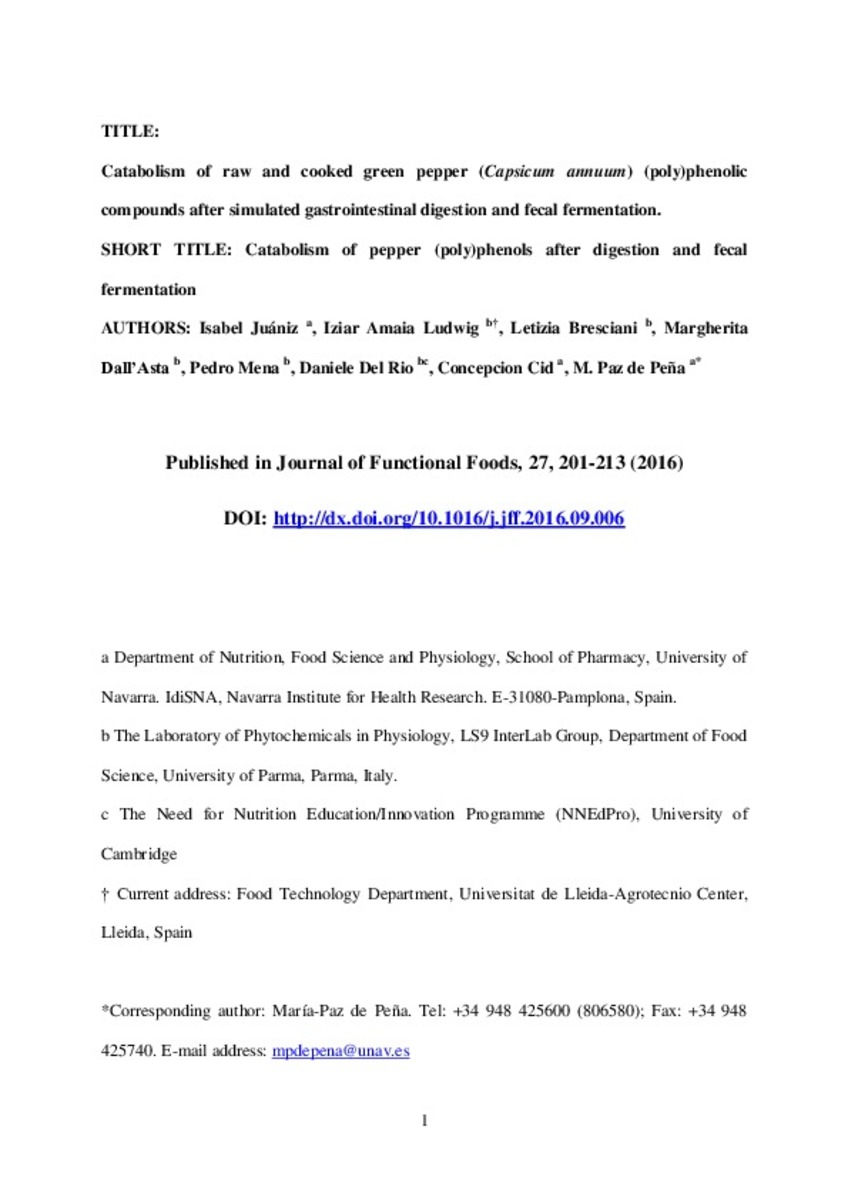Catabolism of raw and cooked green pepper (Capsicum annuum) (poly)phenolic compounds after simulated gastrointestinal digestion and fecal fermentation
Palabras clave :
Materias Investigacion::Farmacia
Polyphenols
In vitro bioaccessibility
In vitro gastrointestinal digestion
Colonic catabolism
Heat treatment
Pepper
Fecha de publicación :
2016
Cita:
Juaniz I, Ludwig IA, Bresciani L, Dall'Asta M, Mena P, Del Rio D, et al. Catabolism of raw and cooked green pepper (Capsicum annuum) (poly)phenolic compounds after simulated gastrointestinal digestion and fecal fermentation. J Funct Foods 2016 Dec;27:201-213.
Aparece en las colecciones:
Estadísticas e impacto
0 citas en

0 citas en

Los ítems de Dadun están protegidos por copyright, con todos los derechos reservados, a menos que se indique lo contrario.







